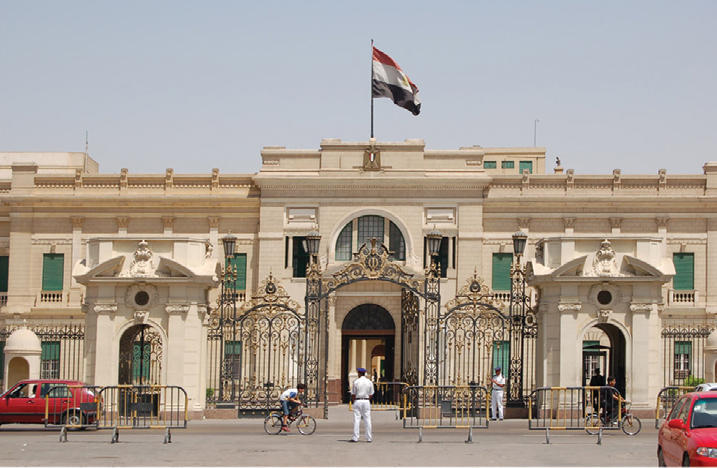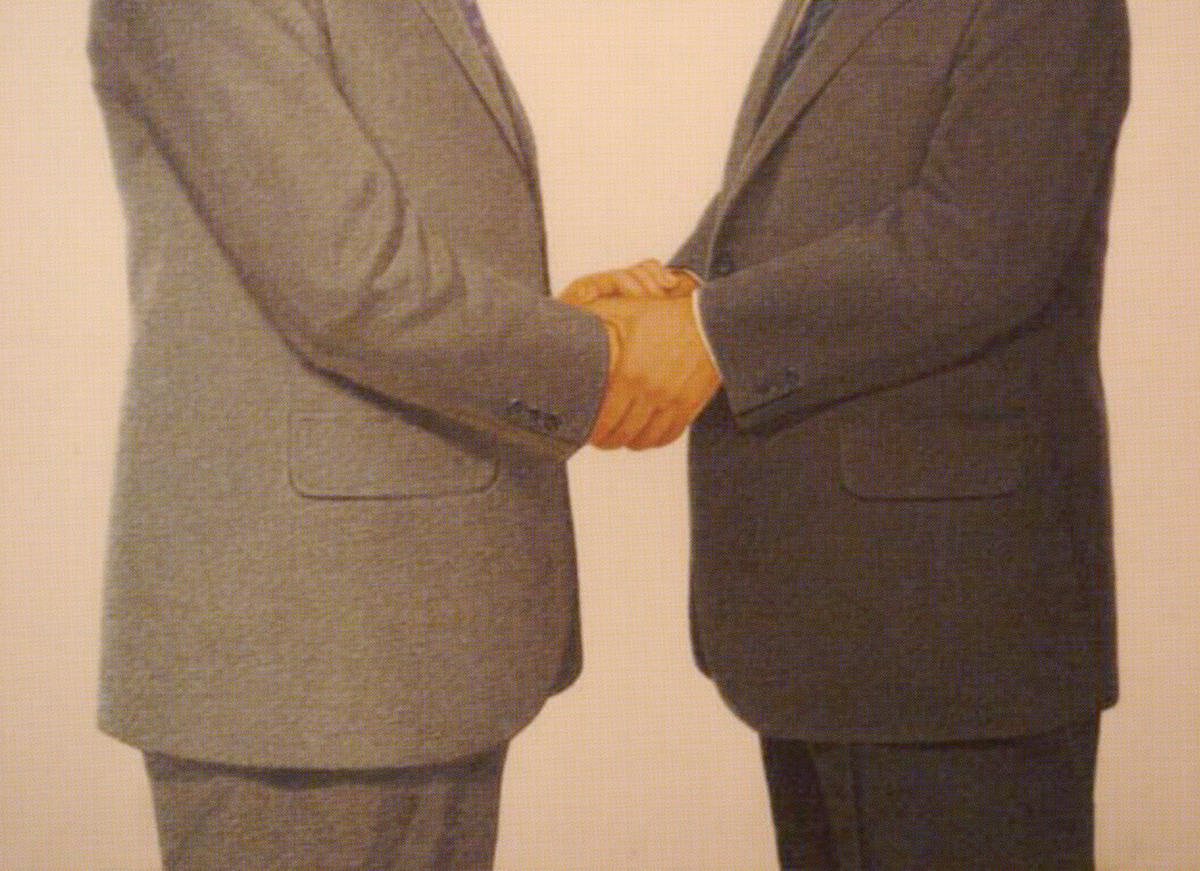
In order to visit Cairo’s Presidential Gifts Museum, one must circumnavigate the winding walls of Abdin Palace, eventually arriving at the back door — Paris Gate — abutting the bustling residential district of Abdin. A working-class neighborhood sprawls out in stark contrast to the legendarily luxuriant gardens beyond the gate.
The spirit of soaring state power is tangible here, as one passes through the former servants’ entrance. An array of security organizations must be propitiated, from the suspicious policemen of the Abdin police station around the corner to the hostile-looking Republican Guards lining the path to the gate. Any visit begins with a perfunctory interrogation that is dutifully recorded for posterity. “Your job? Reasons for visiting the museum?” A lurking military type points out the exact route by which the viewer should explore the museum.
The day I made my pilgrimage to the Gifts Museum, I appeared to be the only unarmed man on the premises. There are weapons everywhere in President Mubarak’s Hall, the first stop on my self-guided tour. The room features a collection of traditional daggers from the Gulf, an early twentieth-century rifle from Libya (a proud reference to Omar El Moukhtar’s heroic struggle against the Italians), as well as two gold-plated Kalashnikovs from Saddam Hussein.

The golden guns have names, Tabouk and Al-Qadisiyya. (In the 1980s, Saddam liked to refer to the Iran-Iraq War as a “Second Al-Qadisiyya,” commemorating the epic seventh-century battle that ended with the fall of Sassanid Persia to Islam.) These tokens from Iraq, Libya, and Saudi Arabia flirt with the Egyptian president’s self-image as a military commander, while not-so-subtly hinting at Egypt’s role as both weapons manufacturer and arms dealer throughout the 80s.
The official gifts of the Israelis and the Palestinians (first the PLO, later the Palestinian Authority) reflect the delicate balance of power and possibilities in the region. Israel’s gift represents a threatening paradox — a prehistoric bronze spearhead inside a wooden box decorated with an olive branch. The Palestinians’ gifts are clichéd statements of pan-Islamic solidarity — shell-inlaid wooden models of the Dome of the Rock, surrounded by Qur’anic verses.
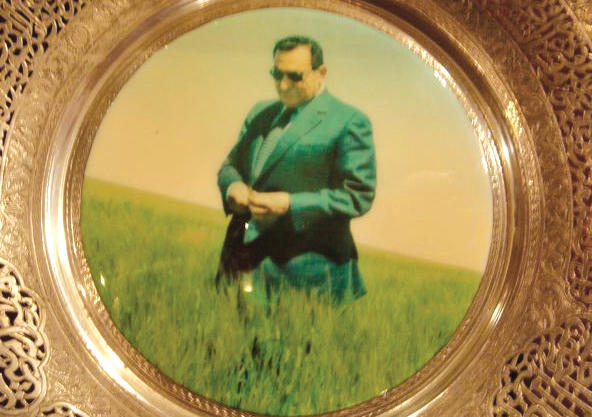
And then there is His Excellency the President and First Lady Hall of Gifts, where the jumbled display is more reminiscent of a storage room than a museum space, producing a curiously powerful jolt — a power that derives not from wealth but from the machinery of oppression. I found myself engaged in a silent, imaginary conversation with the Masonic iconography of competing security organizations, whose coded gifts were given in commemoration of various national and military holidays. The seemingly blunt and banal language of loyalty actually possesses subtleties that reflect the shifting constellation of power and authority attending the ascension of Mohamed Hosni Mubarak to the highest executive position in the land.
The Air Force holds a special position in the museum. An aviator’s helmet is an emblem of the president’s years as a fighter pilot. The air force is the only division that presents the leader with a small personal pistol. They, his sons and former comrades-in-arms, declare themselves ready to provide for his personal physical defense. The army, on the other hand, has steadily lost power since the onset of Mubarak’s presidency. Their offering here seems intended as a gentle reminder of a shared history — a photograph of Mubarak as a junior officer in the midst of an infantry battalion.
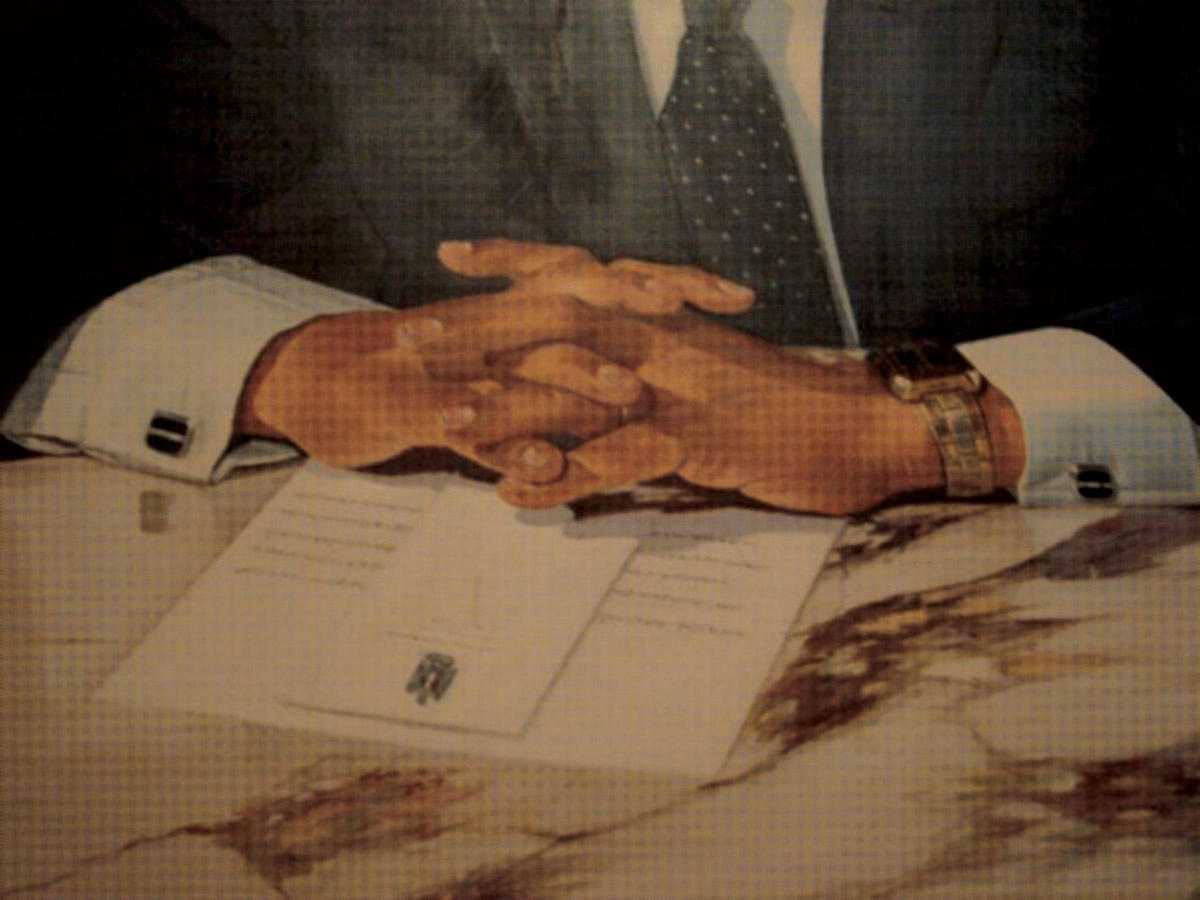
The Ministry of Interior, perhaps the most important element of the state apparatus, showers the president with crystal, including a presidential portrait engraved on a crystal goblet, along with a crystal model of the Mubarak Security Academy. The aesthetics of crystal, a surrogate to precious diamonds, carry a specific political message. The fragility and transparency of crystal reflects a confidence in the perfect efficacy of the security apparatus; the delicacy of brutality. It is as if the ministry is reassuring its supreme commander that they are his lens, revealing the inner workings of the state while remaining completely transparent to his gaze.
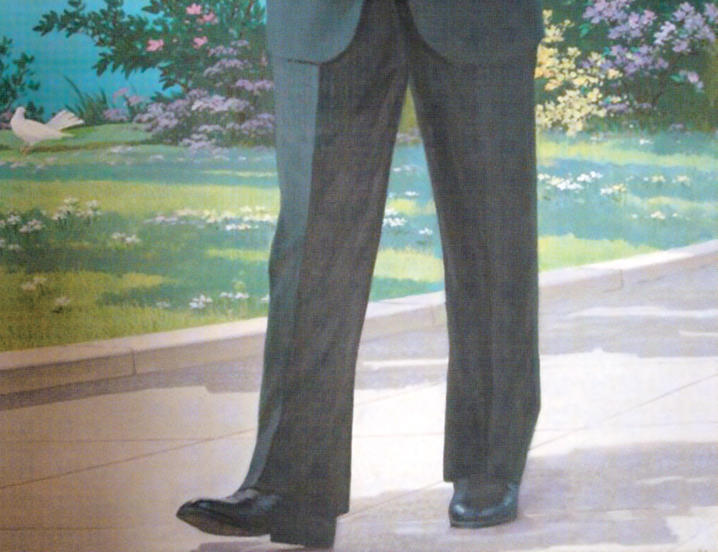
There are gifts from average citizens, too. Citizen Sonia Habashy offers a large painting of a grumpy old man; another likeness, crafted by an unnamed citizen, weaves a portrait of the president as an emaciated young man with a narrow face, posed on a small, cheap, touristic carpet. A young artist named Mohamed Abd El Rehim gambles on the future continuity of the presidential line with an alabaster Mount Rushmore–like sculpture, featuring the visage of the president carved out of a mountain, surrounded by the faces of his grandsons. The official attributes of the leader, as promulgated by the state propaganda machine, are all present in Amr Fahmy’s cartoon drawing of the president, inscrutable in his shades, the complete lexicon of Egyptian symbology held tight in his embrace (the pyramids, the Nile, minarets, church towers, soaring military jets, and factories). At the end of this display, visitors confront a large-scale blowup of the president’s national identification card, suggesting that he is an average citizen who just happens to rule the country.
As I moved from one hall to the next, I had to show my own national identification card over and over again. Just before the exit, I managed to spend a moment lingering in front of a nineteenth–century sword from the Khedive Ismail collection. The blade bears, in German, an all-too-fitting command: “Ye you poor and guilty soul tremble when I raise my ax.” I got the message. And left.
